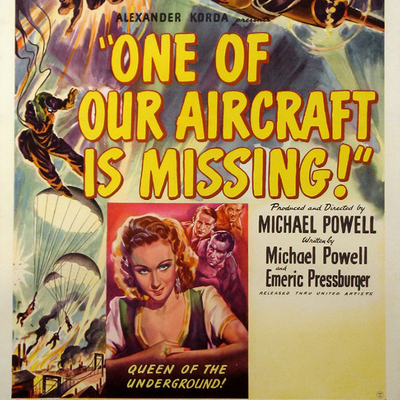You can't win a war without propaganda, and in any case we don't know if you can since it's never been tried. Winston Churchill's famous quote about truth in war being "so precious, it must be attended by a bodyguard of lies" has become conventional wisdom. Less known is that he was probably paraphrasing an old Russian proverb when he reportedly said this to Joseph Stalin at the Teheran Conference, hoping to flatter the old murderer's sensibilities.
But as Pontius Pilate said: "What is truth?" (You have to wonder just what Pilate did while governor of Judea that moved the authors of the Gospels to give him the best lines.)
We assume that every movie made during World War Two was propaganda in the service of the country who made it and their allies, and that the winners were the ones that made the best propaganda. (The knowingly crude quality of Axis propaganda is generally assumed – one foundation of the Mitchell & Webb skit where two SS officers wonder if they're "the baddies".)
And there are so many films made by Hollywood during the war that we can still enjoy despite knowing that they're official or unofficial propaganda – movies like Casablanca, Mrs. Miniver, The Mortal Storm, Thirty Seconds Over Tokyo, The Great Dictator and To Be or Not To Be. But the British turned out to be the masters of popular propaganda that's stood the test of time, with feature films and documentaries like Pimpernel Smith, The Silver Fleet, Night Train to Munich, Went the Day Well?, Millions Like Us and Fires Were Started.
Michael Powell and Emeric Pressburger had delivered a bona fide hit to the British Office of War Information with The 49th Parallel – a story about a German U-boat crew on the run across northern Canada after their submarine is sunk in Hudson Bay – when they pitched their next film to J. Arthur Rank. Rank turned it down, which sent them back to the OWI and its film division, which was run by Kenneth Clark, on unofficial leave from his job as director of the National Gallery.
One of Our Aircraft is Missing (1942) had its genesis in a phrase he heard on BBC news programs: "one of our aircraft has failed to return." As he recalled in his autobiography A Life in Movies, "the raids on military targets in enemy-occupied Europe were mounting steadily, and every night the inhabitants of the eastern counties and the Channel area could hear the roar as the bomber squadrons of the RAF swept across the Channel towards targets in the Rhineland, the Ruhr and occupied France."
The film would be the first Powell and Pressburger made under the collective creative entity The Archers, and begins in typically idiosyncratic fashion. The camera crawls down a typewritten communique from the Dutch government-in-exile, detailing the execution of five Dutch patriots – farm workers between 22 and 52 – executed by the Herrenvolk for aiding in the escape of downed British aircrew.
The action cuts to an airfield in the south of England, where air traffic crew note that a single bomber – B for Bertie – hasn't returned from a mission. We see the aircraft, a Vickers Wellington, one of the nearly obsolete twin-engine bombers the RAF used in the early years of the war before the mighty Lancaster arrived, flying through the night sky with no one at the controls. The empty plane steers steadily lower until it hits a high voltage tower and bursts into flames.
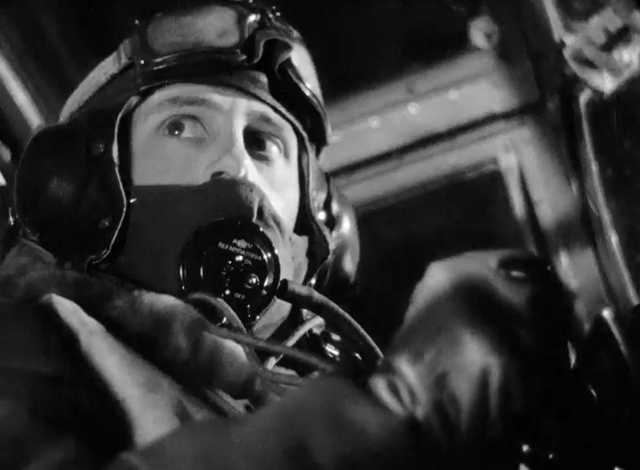
The film rewinds several hours to the same airfield and the crew of B for Bertie assembling for their next mission, officers in their mess, enlisted men in theirs. The six men cut across classes and regions: Haggard the pilot (Hugh Burden) is a diplomat, the classic young upper middle-class toff we expect to find in the cockpit of an RAF plane, but his co-pilot Earnshaw (Eric Portman) is a wool merchant and a Yorkshireman, as is Hickman (Bernard Miles), the front gunner.
Navigator Shelley (Hugh Williams) is an actor, and Ashley the wireless operator (Emrys Jones) is a professional soccer player from Wales. The tail-gunner, Sir George Corbett (Godfrey Tearle), is an old vet from the Great War and an actual knight whose lofty status is a constant source of jokes for the rest of the crew. "You've got the carriage all to yourself," one of them quips as the older man struggles to make it all the way to the end of the Wellington's cramped fuselage, with its signature geodetic airframe.
It's the British version of the Hollywood GI platoon – the wiseass Italian, the Brooklyn Jew, the college kid, the farm boy and the tough veteran NCO under the command of the midwestern family man fresh out of officer school who'll learn hard lessons trying to keep them alive.
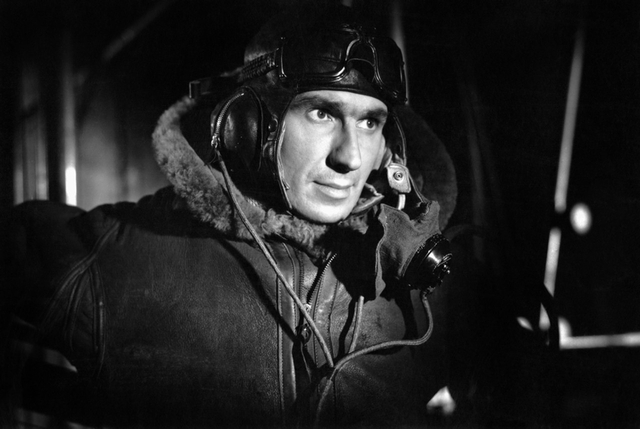
They learn that their target is the Mercedes-Benz factory in Stuttgart ("a blasted beehive" complains one of the crew) and we begin a long sequence where audiences could get a very nearly realistic depiction of an actual bombing mission in the years of the war when Britain was still fighting alone against Nazi Germany.
Powell and Pressburger strove to make the first third of the film as realistic as possible, relying on Pressburger's memories of being a student in Stuttgart, and David Rawnsley, their art director, who only asked for a whole soundstage to himself for a month to build the miniature set of the city. He got it and went to work at Riverside Studios by Hammersmith Bridge. (Riverside Studios was later turned into an arts complex; I saw a program of silent films with live piano accompaniment there in 1997. It's still there, though the original building was demolished and redeveloped nearly ten years ago.)
"You can imagine what an immense model it was," Powell recalled, "for it covered the whole studio floor and it was all wired for explosions and lighting effects, and flak coming up towards the camera, and you name it. It was a boy's dream come true. If only my brother John could have lived to see it." Powell's brother had died of a burst appendix in 1918, at just fifteen.
Meanwhile at Denham Studios in Buckinghamshire the RAF provided the production with the complete shell of a Wellington bomber, which they rewired so that the lights, gun turrets and intercom worked. "I had decided on complete naturalism," Powell wrote. "There would be no music. There would only be the natural sounds of a country at war."
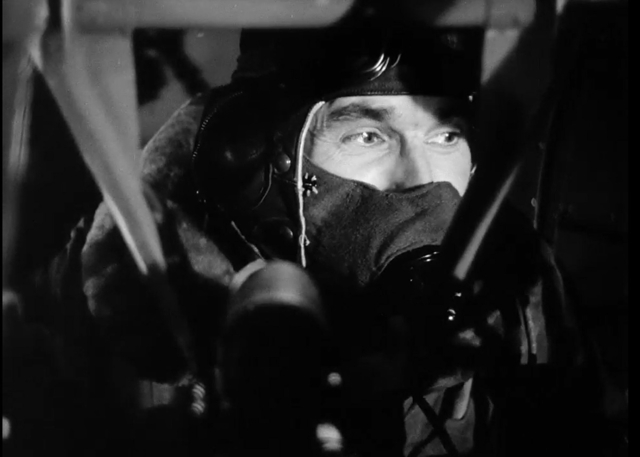
The result is a riveting first third, with the camera up close to the men at their positions, the only sound the plane's engines, the banter, checklists and commands over the intercom and the anti-aircraft bursts outside. We get a lot of their characters established despite the masks and helmets, though three of the men stand out: Hickman, thanks to Bernard Miles' natural comic talents, Tearle's Sir George (the actor's career went back to the Victorian era, where he had performed onstage with Herbert Beerbohm Tree and Henry Irving) and Eric Portman's Earnshaw. Portman had been part of the U-boat crew in The 49th Parallel and would return to play the "glue man" in A Canterbury Tale.
I was riveted by B for Bertie's bombing run when I first saw the film at an Archers retrospective in the '90s. The model work is certainly dated, but Powell makes up for it with an uneasy sense of mood and grim urgency that can only come from the fact that these missions were taking place while the film was being made, by men exactly like the ones in the film. (They had wanted Ralph Richardson for Sir George, but the actor was in training with the Fleet Air Arm and both unwilling and unable to leave real-life thrill-seeking for merely acting it.)
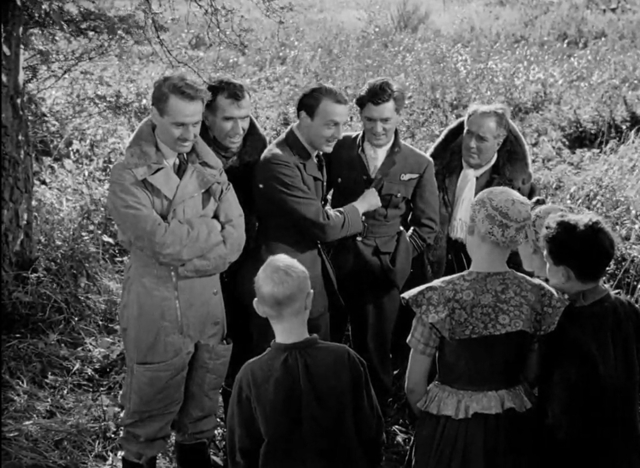
The only notable inaccuracies in the film are understandable in a piece of propaganda. While approaching their target, the crew of B for Bertie get caught in a searchlight, which Hickman and Sir George shoot out with their guns. Later, they come in over the Mercedes factory, their target lit up and ready for a direct hit. History buffs will know that this sort of precision, either with guns or bombs from an aircraft flying at night and at altitude, were practically impossible, and certainly not this early in the war.
What's not fiction is the flak burst that damages the bomber, taking out one of the engines and crippling the other. The casualty rate for Bomber Command was terrible – two out of three aircrew would be killed, wounded or taken prisoner by the end of the war. Early missions with obsolete Fairey Battles saw whole squadrons nearly knocked out, and fighter escorts for bombing missions wouldn't be common until later in the war.
The crew of B for Bertie try to set a course for home but abandon ship over Holland, south of Hilversum, when their other engine cuts out, though the engine re-starts after the last man has parachuted out of the plane, setting up the ghost flight that starts the picture.
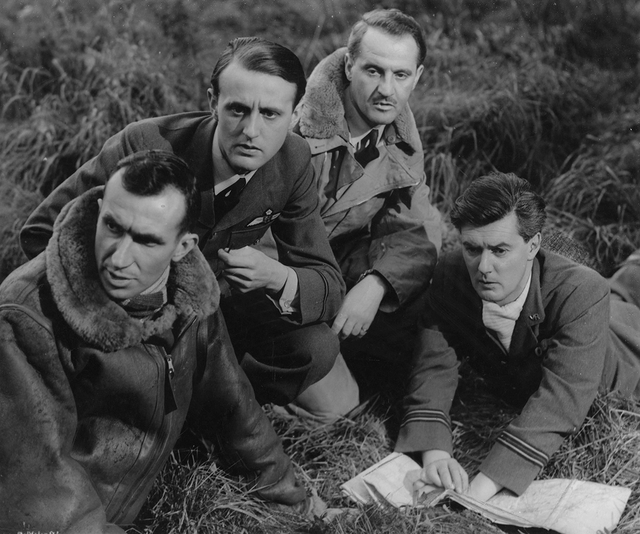
At this point the whole tone of the picture changes, with five of the six men on the ground behind enemy lines, with only Ashley the Welsh soccer-playing wireless operator missing. They're found by a group of children in traditional clothes straight out of a Bruegel painting, who convey them to the nearest village after revealing the safety pins concealed in their clothes – signs of their support for the resistance.
The Dutch had a high standard for organized opposition to German occupation during the war, and considered anything that didn't involve assassination, sabotage or other guerrilla activity as passive resistance and therefore not resistance as such. Resistance, however you define it, was still widespread and organized – Audrey Hepburn's role in underground groups while still a child is well-documented, and included helping downed Allied airmen hide from the Germans and escape the country.
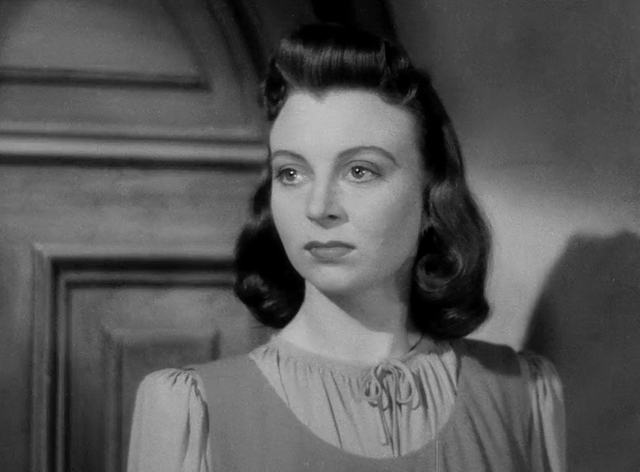
The first resistance group the airmen encounter is mostly women, and led by Else Meertens, played fiercely by Pamela Brown, a schoolteacher who speaks English and initially doubts the airmen's story as there had been no reports of a bomber crashing nearby. Brown would end up starring in one of Powell and Pressburger's early masterpieces, I Know Where I'm Going! (1945), and in films such as Richard III, Cleopatra, Lust for Life, Becket and A Funny Thing Happened on the Way to the Forum. She would also live with Powell (a devout Catholic, she couldn't re-marry while her ex-husband, actor Peter Copley, was still alive) and was with the director until she died of cancer in 1975.
The airmen finally convince her of their identities and are passed on to the next stop in the network for hiding downed flyers – a Catholic church, which causes some consternation with Earnshaw and Hickman, both nonconformists (a Methodist and a Baptist respectively) who complain that they'll have to explain this at chapel when they get back to England. It also requires dressing Shelley up in drag – one of the film's many comic bits, which the actor takes on as a challenge to both his professionalism and his vanity.
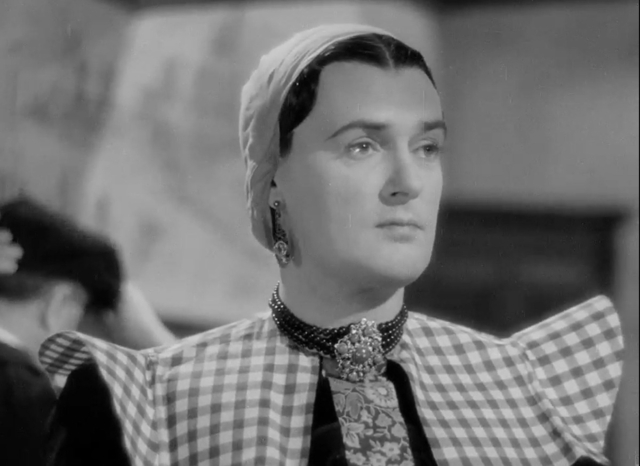
The priest at mass in the next town is played by a very young, thin Peter Ustinov with what seems – seen in hindsight from his later career –an uncharacteristic stillness. This leads to the first close call, when German soldiers riding around in armoured cars with sirens blazing converge on the church after finding a badly hidden parachute. (They immediately suspect Ashley, the missing radioman, whose "brains are in his feet.")
With customary care and style, Powell and Pressburger paid particular attention to casting the Germans in the film, even though they could only be distinguished as voices or silhouettes. "The audience saw military vehicles packed with soldiers careering along with their klaxons blaring," Powell wrote, "but we never got close to a German in the whole film, except in the sequence in the church. It was one of those inspirations that are worth their weight in gold."
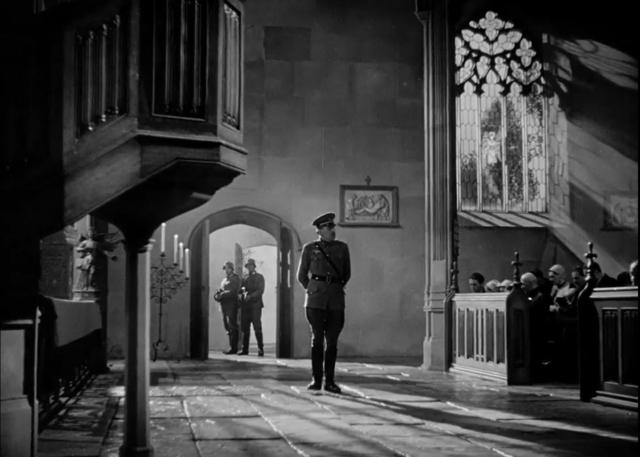
Indeed, the German officer who interrupts mass is filmed in long shots, backlit by the church windows, or in the mirror above the organist at his keyboard. German occupation is more openly embodied by De Jong, the collaborator the men encounter at their next stop in the escape route. He's gleefully overplayed by Robert Helpmann, an Austrian actor and ballet dancer who had partnered Margot Fonteyn.
Helpmann was a neighbour of Powell's in Belgravia, and the director was convinced of his talent when others weren't: "In our film, he played a Dutch traitor, a quisling, and did a splendid piece of overacting which shocked the other, less naked and more reserved actors. I encouraged it. I loved Bobby's overacting." He would go on to roles in other Archers films like The Red Shoes and The Tales of Hoffman and would play the Child Catcher in Chitty Chitty Bang Bang.
The crew is reunited when they find Ashley hiding in plain sight, playing for a local soccer team, and move on to their final stop before the sea. This is a vast house connected to dockside warehouses, overseen by Googie Withers' Jo de Vries – a widow whose husband was (apparently) killed in Allied bombing raids (he is, in fact, in London working for the Dutch resistance), who hides escaping airmen in her home right under the noses of the German officers garrisoned there.
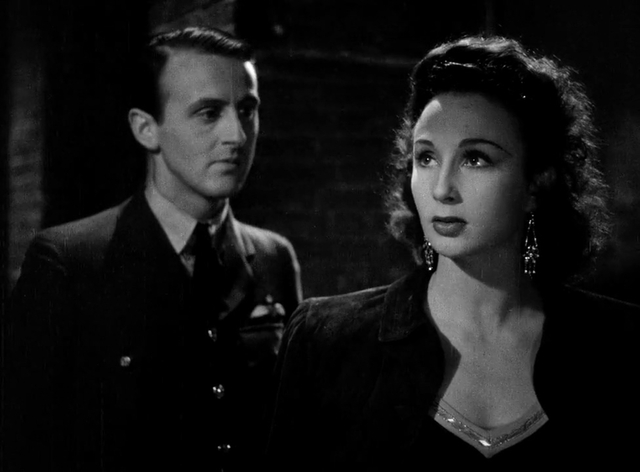
Another fierce woman (the film gives the impression that Dutch resistance is a matriarchy), she's the boss of a loyal gang up for anything that will hinder the Germans, and unbothered by the prospect of, say, disposing of a few bodies of Nazi officers who get in the way of the airmen as they're about to row the last miles of their escape.
The film is full of names familiar from this column. David Lean was the editor, still a year away from moving on to the director's chair, and the cinematographer on the picture is Ronald Neame, who would become Lean's producer with Great Expectations. Hay Petrie, the burgomaster and nemesis of the quisling De Jong, would play Uncle Pumblechook in Great Expectations, and Withers would go on to a major part in Jules Dassin's brit noir Night and the City. Such was the depth of talent in the British film industry at this time.
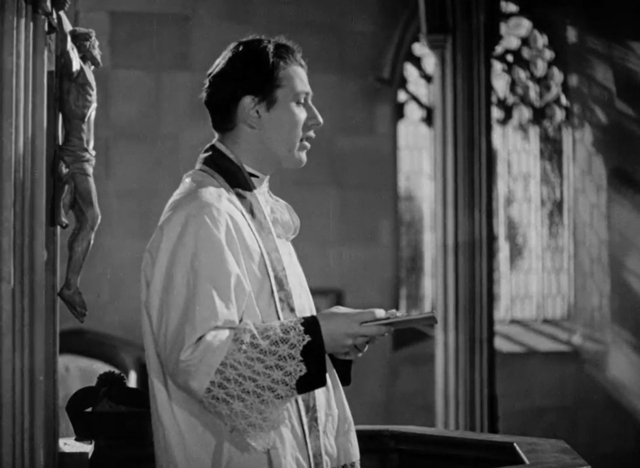
Powell and Pressburger's crew worked so well together that they caught the attention of Noël Coward who, as Powell recalls "was visiting all the studios at the time, asking questions and watching film units at work...He visited us one day near the end of the film, when we were all working in close harmony, and watched us stage and wrap up a sequence which was quite elaborate in about two hours. He took over the whole of my unit and together they made In Which We Serve."
The Archers' next project had its genesis with Tearle's Sir George, the only man in the crew who understands what they're up against while behind enemy lines, and who turns out to be confident with both a pistol and his fists. He was inspired by Sir Arnold Wilson, a Tory MP and WW1 veteran who volunteered as an air gunner in Bomber Command and died when his plane crashed near Dunkirk in 1940. (Wilson's life story is fascinating; he was a self-described "left-wing radical Tory" who no less than George Orwell called a "Fascist".)
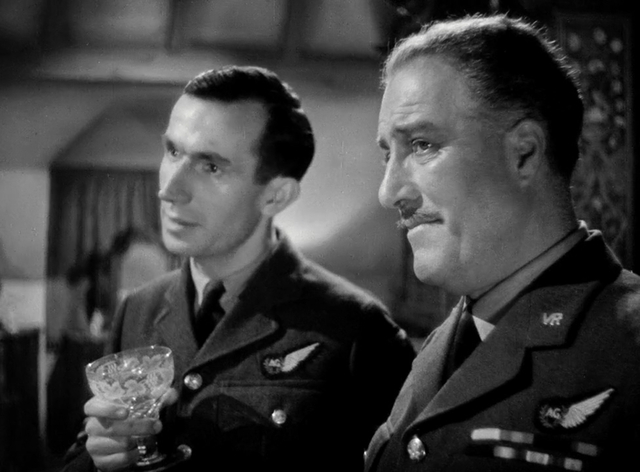
"Here is our hero," Emeric Pressburger told Powell. "Just imagine, Michael, what a bore such and old gentleman must seem to the young men who make up the bomber's crew. They would want to get rid of him. They would think he should be grounded, and yet such a man, when they are trying to find their way home through enemy-occupied territory, would be invaluable. Airborne, they are the professionals. On the ground, he is."
One of Our Aircraft is Missing was a hit, and Rank came back to the Archers, hat in hand, asking to produce their next picture. "I suppose he had expected us to say One of Our Submarines is Missing or One of our Regiments is Missing. God knows, they were all made at one time or another during the war, or after it. So everyone looked a bit blank when I said it was about Colonel Blimp."
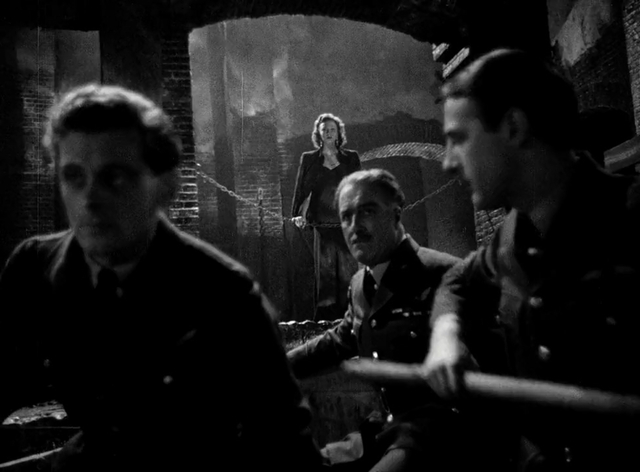
Powell and Pressburger were inspired by a scene cut from the film, where Tearle's Sir George tells Burden's Haggard that they were really the same man, separated by a generation of experience. They even had to convince cartoonist David Low, the creator of Colonel Blimp, that there was a whole movie in his character, and they would make The Life and Death of Colonel Blimp next, their first masterpiece, and despite the opposition of British High Command and the War Office, who considered it poor propaganda if not treason.
It's a film that my friend the late (and dearly missed) Kathy Shaidle described as "Gone with the Wind for guys – it's been known to make grown men cry – Colonel Blimp spans decades of conflict and peace, love and loss, with welcome helpings of sly, dry British comic relief." But I'll just let you enjoy what Kathy had to say.
Mark Steyn Club members can let Rick know what they think by logging in and sharing in the comments below, as access to the comments section is one of many benefits that comes along with membership in the Mark Steyn Club.


